The Year in Food: What Was Hot and Tasty in 2015
It was a dramatic year on so many fronts: politics, terrorism, refugees, gender identity, police relations, race relations, the environment, and on and on. In the world of food, things were less tense, but it was still a year of significant change. The reason? Major consumer packaged goods companies began to make serious modifications to the most famous foods around, from Hershey’s Kisses to Kraft Macaroni & Cheese to Diet Pepsi. Customers clamored for ingredients they could understand, wanted less junky junk food, and giant corporations responded. It’s the beginning of a shift that will continue well into 2016. Food waste and a living wage for restaurant workers were top issues too. But there were lighthearted moments as well, filled with frozen treats (lobster ice cream, anyone?), cute kids in the kitchen, and a vegan success story in New York City.
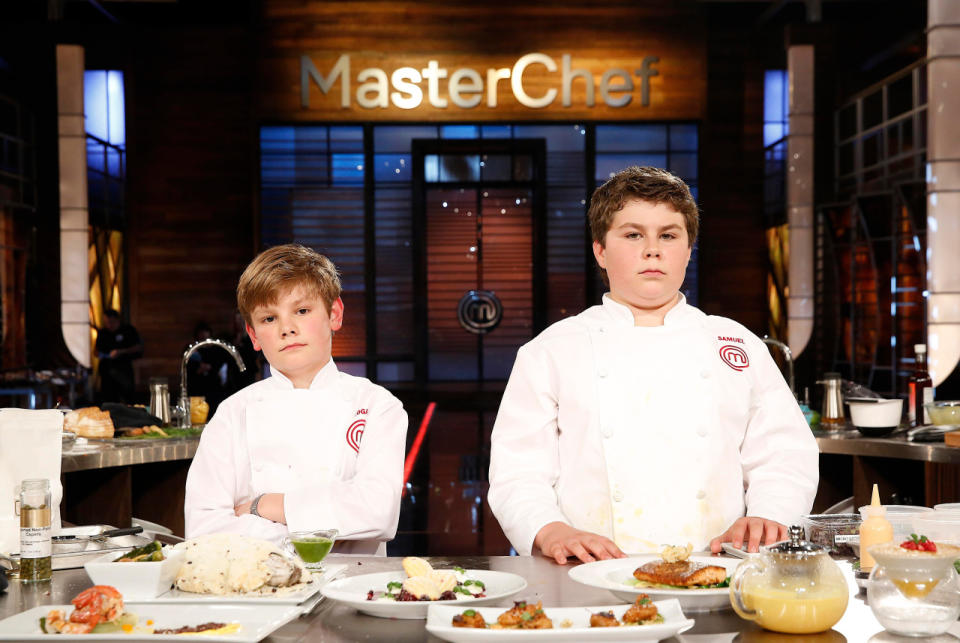
Photo: Getty Images
The Junior League
Chefs are getting younger and younger. Just take a look at the Fox TV hit MasterChef Junior where kids whip up dishes that would challenge most adults. Then you have enterprising college students turning their dorm rooms into pop-up restaurants, and entrepreneurial teens looking for food alternatives to the typical summer job. Take New York City public high school student Harrison Geller, whom Yahoo Food discovered behind the counter of his temporary gelato shop. Sure, there will always be kids who are picky eaters, but it looks like 2015 was the year of the absolute opposite — the underage gourmand.

Photo: Courtesy of WastED
Food Waste
How much food do you throw out annually? The shameful amount we discard as a nation was a big topic of discussion this year among food activists. Chef Dan Barber led the charge with the “wastED” pop-up at his Blue Hill restaurant in New York City. He invited renowned chefs like Eleven Madison Park’s Daniel Humm to stop by and cook with the ingredients that most professional kitchens toss into the garbage — such as vegetable pulp and cauliflower stems. Also helping the cause was the Ugly Fruit and Veg campaign, popular on social media, which challenged consumers to see the beauty in imperfect produce. A bruised peach or a dinged zucchini? Big deal.

Photo: Munchery
Food Delivery Services
You’ve heard of real estate bubbles and tech bubbles. Well, there’s a food and meal delivery bubble clearly underway. We received so many emails at Yahoo Food this year about new companies in this space, we lost track, aside from a few that sounded interesting and promising, like David Chang’s Maple. Yet investors don’t seem deterred. According to CB Insights, companies in this category raised more than $750 million in venture capital in 2015 alone, and $1 billion the year before that. Are there enough hungry (and kind of lazy) people to support all these companies? Probably not.
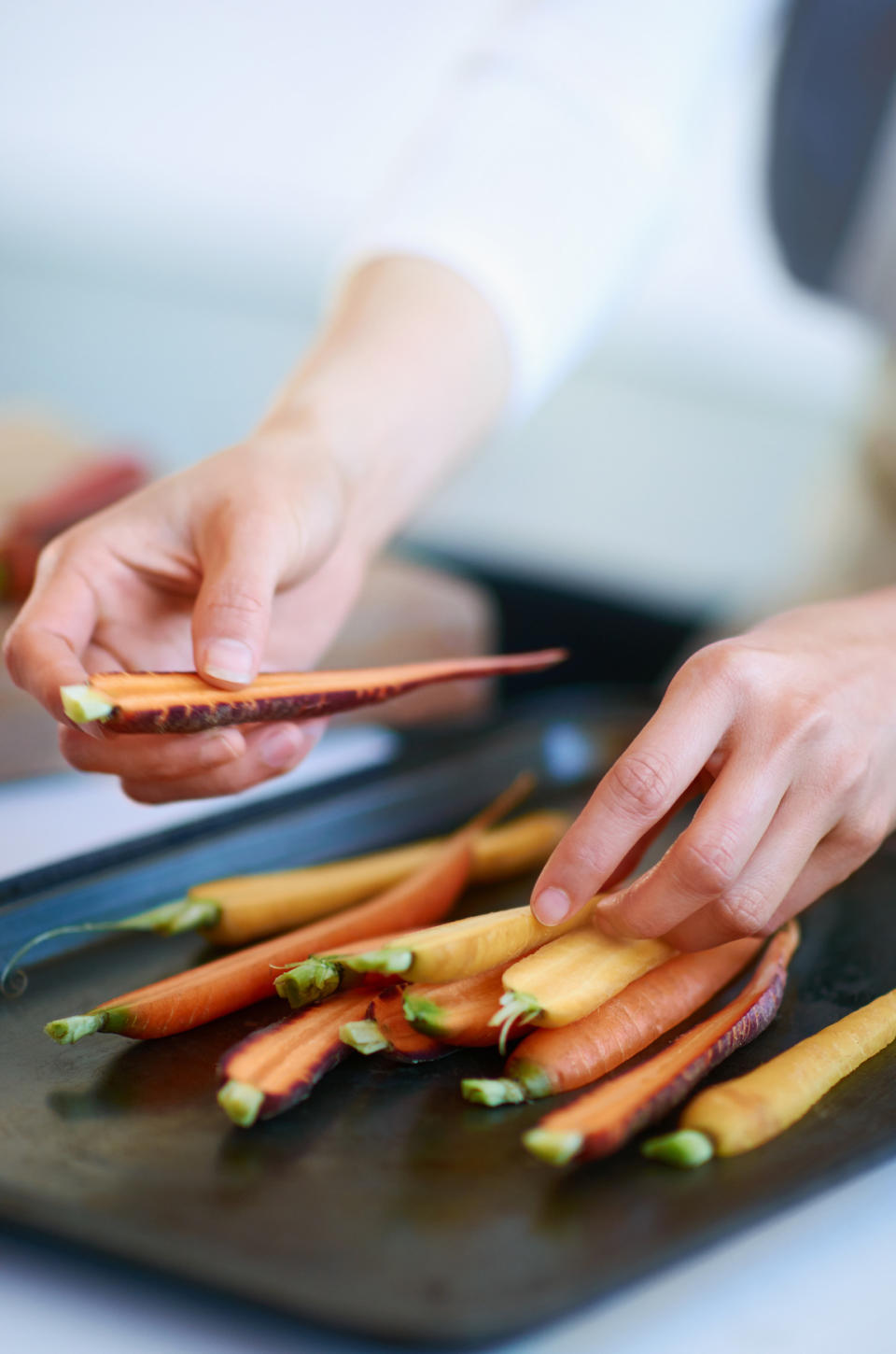
Photo: Stocksy
The Rise of the Vegans
For years, vegans were the butt of jokes. “How do you know someone is a vegan?” went one wisecrack. “Don’t worry. They’ll tell you.” But no one is laughing today, especially at supermarkets. More and more shelf space is being dedicated to non-meat and non-dairy options to satisfy this growing clientele. One of the hottest vegan food startups around, Hampton Creek, has raised more than $100 million from investors. The surprise bestselling cookbook of the past two years is Thug Kitchen, a compendium of profanity-laced meat-free recipes. And one of the biggest success stories in the New York City restaurant scene this year is chef Chloe Coscarelli, who opened the casual vegan spot By Chloe. It’s packed every day and even scored a New York Times review. “There is something subversive beneath the cuteness,” wrote the paper’s Ligaya Mishan. “By casting veganism as effervescent pixie lifestyle rather than moral crusade, By Chloe may be stealthily recruiting more followers to the cause.”
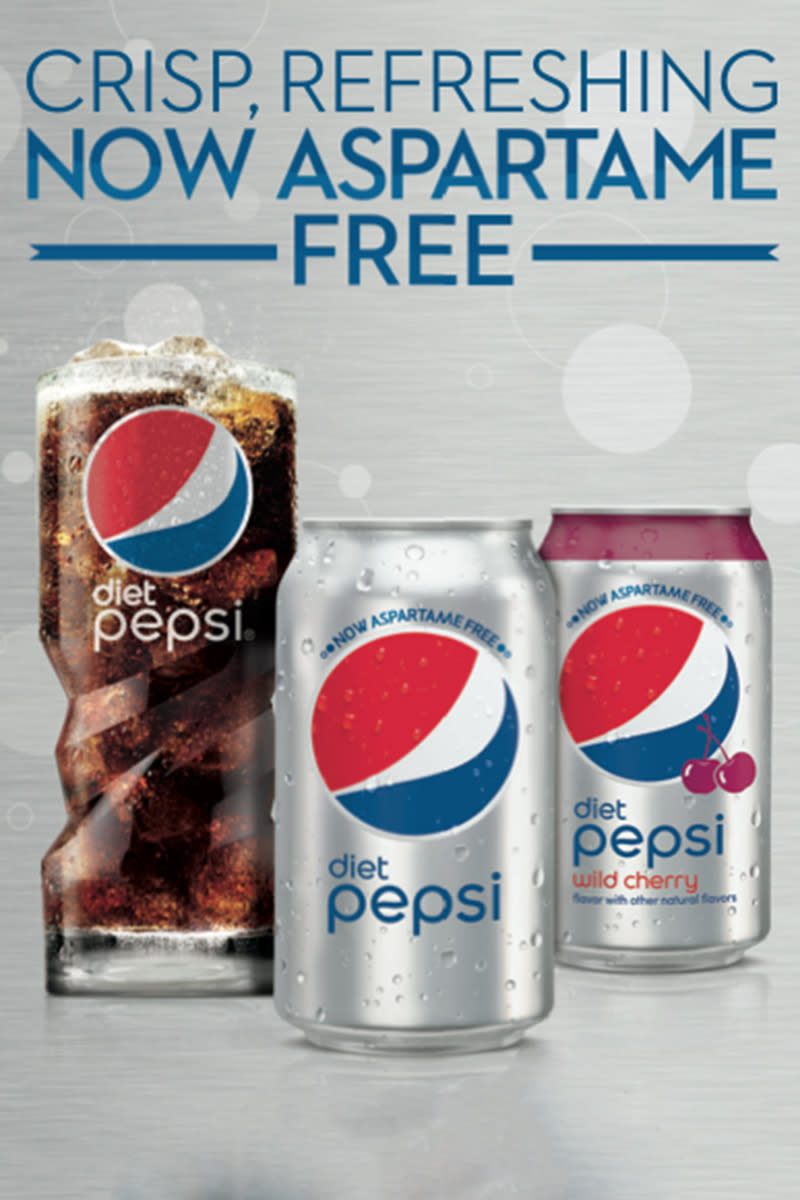
Photo: Pepsi
Processed Food Gets a Makeover
More and more consumers want to understand what’s in their food. They don’t want long lists of ingredients they can’t pronounce and don’t recognize. Big Food is on notice and is making changes. Some of the highlights: A new Diet Pepsi without the controversial sweetener aspartame was launched this year. General Mills is dropping the artificial colors and flavors from all of its cereals. Kraft even dared to change up its iconic mac and cheese, and is swapping the artificial orange coloring for naturally derived turmeric, paprika, and annatto in 2016. Will the taste change? We’ll know soon enough. Even Pizza Hut, not the first name in health food, announced plans to remove artificial flavors from its menu.

Photo: Stocksy
Ice Cream Nation
This year was a tough one by most measures, but, blissfully, one thing remained uncomplicated: ice cream. Maybe that’s why America’s love affair with the sweet treat is as strong as ever. According to a Yahoo Food survey from this summer, ice cream is by far the country’s favorite dessert and 86 percent of us indulge weekly. America’s favorite flavors? Chocolate, followed by cookies & cream, vanilla, cookie dough, and mint chocolate chip. (America’s weirdest flavors? Grass, lobster, and kimchi.) Innovators even offered us new ways to enjoy the stuff. One novelty that popped up this summer was rolled ice cream, which is flattened, shaved into curls, and served in a cup.

Photo: Offset
Here’s a Tip
It used to be you left 15 percent on your restaurant or dinner check and called it a day. No more. Tipping has gotten very complicated. Some restaurants have done away with it altogether, instead charging a 20 percent service fee and sharing the proceeds with servers, cooks, and coat checkers alike. It’s part of the movement toward a living wage and better salaries for restaurant workers. At other eateries where traditional tipping remains in place, diners use gratuities — or lack thereof — as a means of settling scores or making a social statement. At a TGI Friday’s in Centerville, Ohio, one tip war broke out when a server was allegedly too flirty. An aggrieved guest added zero percent to the bill and wrote this on the receipt: “He’s my husband, find your own. Good luck :)”
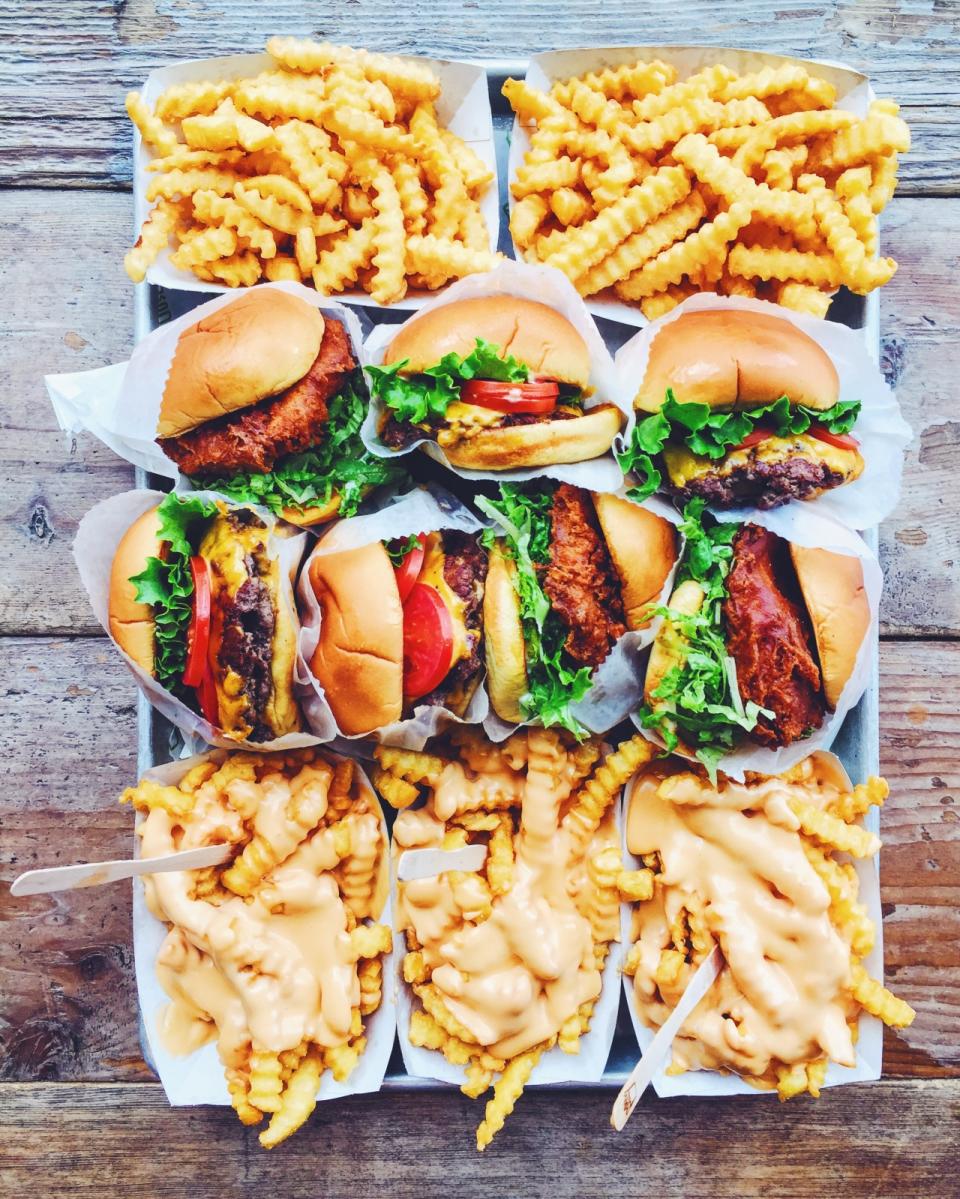
Photo: Samantha Bolton
The New Fast Food
McDonald’s and Burger King remain big businesses, but the fast food behemoths became more irrelevant in 2015. We’re now in the era of elevated and interesting fast food. Shake Shack, the better burger chain, went public this year and continued its global expansion. Chef José Andrés began the rollout of his veg-focused chain Beefsteak (the name refers to the tomato, not the meaty stuff) in Washington, D.C. And the enlightened concept known as LocoL and backed by superchefs Roy Choi and Daniel Patterson is set to open soon in the Watts neighborhood of Los Angeles. “We believe that fast food restaurants can truly empower the communities they currently underserve,” reads the LocoL manifesto on its website. “We believe that the giant corporations that feed most of America have degraded our communities by maximizing profits over decades. We believe that chefs should feed America, and not suits.”
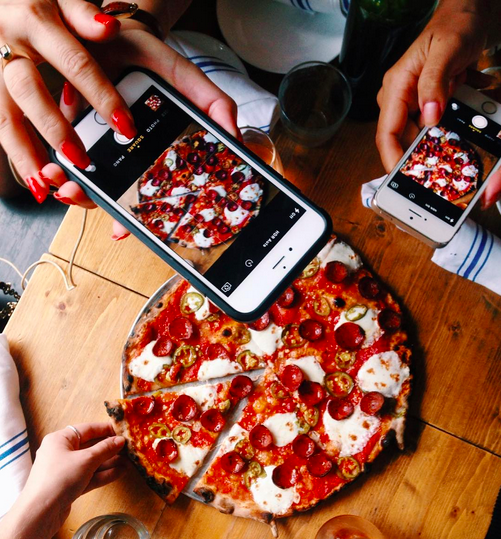
Photo: Instagram/@GillieHouston
Instagrammers Got the Power
The most influential foodies around today? Celebrity chefs and bloggers still have pull, but everybody wanted the top Instagrammers at their (virtual) tables this year. The social media channel has become the venue for spreading the word about what’s hot in food circles, so the folks behind the most popular accounts found themselves quite popular with publicists and the media alike. Remember when there was talk of banning cameras and smart phones from dining rooms? Instagram shut that conversation down pretty quick.

Photo: Spoon & Stable
Good Eats for All
For years, major cities like New York, San Francisco, Los Angeles, and Chicago had the lock on great food. But no longer. Chefs are taking chances on smaller cities and towns and getting raves for their restaurants, no matter how remote. Take Chef Vivian Howard of Chef & The Farmer in Kinston, N.C., population 21,641. Andy Ticer and Michael Hudman of Hog & Hominy and Andrew Michael Italian Kitchen have brightened the Memphis dining scene, and Gavin Kaysen has done the same for Minneapolis with his popular Spoon and Stable. Ashley Christensen has transformed Raleigh, N.C., with her seven establishments, including the well-regarded Poole’s Diner. And the Indianapolis dining scene has become one to watch thanks to the work of restaurateurs like Martha Hoover of Cafe Patachou and Public Greens. It’s getting easier to find good food across America — and that might be the best trend of all.
More food for thought from Yahoo Food:
Buying These Organic Foods Is a Waste of Money
What It’s Like to Feed a Family For Less Than $20 A Day
Startup Saving ‘Ugly Food’ From Landfills and Saving Customers Money

